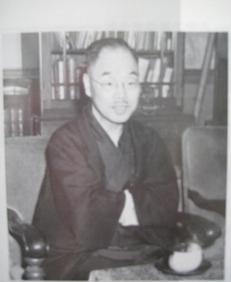
Katsuzo Nishi – Founder of the Nishi Health System
From his mouth to our ears – how things get garbled and go astray.
In 1927 Katsuzo Nishi created a system of health exercises called the Nishi Health System (Nishi Shiki).
His theories are characterized by the idea that the human bone structure and positioning of the internal organs are basically the same as those evolved for the mammalian species that ambulate on four legs, but human beings have adopted an upright two-legged life style that places unnatural structural strains on the human bone structure. This results in problems like obstruction of the flow of food through the intestines (constipation) due to the unnatural (vertical) positioning of the organs.
As methods to compensate for these structural defects, Nishi conceived and encouraged the use of treatment through exercises such as the goldfish movement spinal column exercise and the lateral vibration exercise known as the “Haifuku Undo”.
It so happens that Nishi was himself a student of Aikido Founder Morihei Ueshiba, and the Nishikai (the organization formed around the Nishi Health System) was instrumental in inviting Koichi Tohei to Hawaii in 1953.
In 1961 the students of Hawaii dedicated the opening of the “Honolulu Aiki Dojo”, the first Aikido dojo constructed outside of Japan. Morihei Ueshiba O-Sensei came from Japan, his one and only trip to the United States, to dedicate the opening of the dojo.
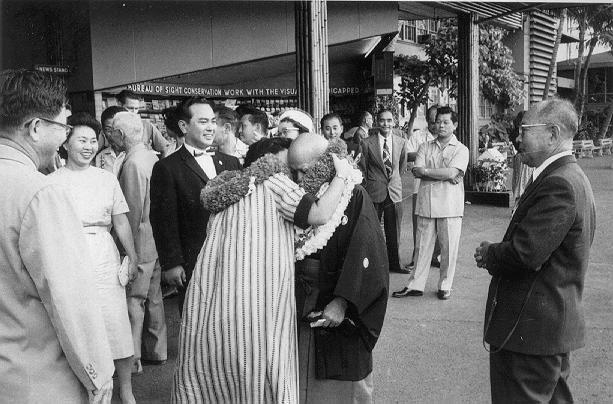 Morihei Ueshiba receives a lei and a hug at the Honolulu
Morihei Ueshiba receives a lei and a hug at the HonoluluInternational Airport, 1961
From Koa Kimura’s Photojournal on the Aikido Hawaii website
Morihei Ueshiba was accompanied on his trip from Japan with Koichi Tohei (a 9th dan, at 41 years old) and Nobuyoshi Tamura (a 5th dan, at 28 years old). Tamura was instantly given the nick name “the Stone Wall” for his immovability on the mat.
In 1999 Koichi Tohei published an interesting book – 中村天鳳と盛平植芝:気の確立:

“Nakamura Tenpu and Ueshiba Morihei: The Establishment of Ki”
In it, Tohei discusses the two major influences on his life and his art – Nakamura Tempu, one of the pioneers of yoga in Japan and the founder of an art called “Shin Shin Tōitsu-dō” (that name may sound familiar to practitioners of “Shin-Shin Toitsu Aikido”), and Aikido Founder Morihei Ueshiba.
Tohei recounts an interesting episode from his time in Hawaii, and I think it represents a good example of how the statements of the Founder have been garbled and misunderstood and why.
This is a story from much later on, after the war when Aikido was expanding explosively in the United States. In that place only positive stories of Ueshiba Sensei were being told. Negative stories were absolutely not spoken. That’s OK, of course, but the problem was in how to transmit Sensei’s words. In any case, even among native Japanese the meaning was quite difficult to communicate. In a country with a completely different culture that difficulty increases by several times.
When Sensei went to America a reporter from one of the newspapers came to conduct an interview.
The things that Ueshiba Sensei spoke of were exactly the same as those he spoke of in Japan. He would say things like “through the combination of love and light…”, anyway – things that cannot be understood easily in Japanese.
Even when asked things like “How are love and light combined?”, there was no answer.
Since there was no system of reason or logic from the beginning, it’s natural that there could be no conclusion.
Ueshiba Sensei would say “I have never lost an argument”, but I understand that quite well – since the other’s question and Sensei’s answer never match each other, of course he could not lose.
Finally, I was asked by the reporter, “I can’t write an article like this, could you please translate it for me?”.
Ueshiba Sensei said, “Yes, that’s quite true” – he was quite meek in this case, but the problem came with the student ordered to perform the translation.
The evening of the next day, since the reporter was coming to pick up the draft of the article, I took a look in and saw that the student had been taking a lengthy nap.
When I asked him, “Hey, is the translation finished?”, the answer was, “I haven’t done it”. In fact, none of it had been done.
“Hey, haven’t you done anything yet?”
“There’s no way to do it. Sensei’s words can’t be understood.”
“Didn’t Sensei tell you to do it? There’s no use in just saying it can’t be understood, the reporter will be coming soon.”
“No matter what you say, what can’t be done can’t be done, it’s impossible.”
At that, another person in the room scolded me. “Tohei Sensei, you can’t make such impossible demands. It’s pathetic to pick on him even if he’s not able to do it. Can Tohei Sensei do it? If Sensei can do it then why don’t you go ahead and do it?”
I understood that they were correct, so it was decided that I would perform the translation. I could not translate “through the combination of love and light…” directly. However, if love is “Plus Ki” and if shadow is negative than light also means “Plus”. If that is so than I thought that it could all be replaced with “Plus” and I replaced all the instances of “Love and Light” with “Plus Ki”.
In other words, it was a loose paraphrase of the original. I did not write it exactly the way that Sensei wrote it, but the meaning had not changed. In that way, I was able to complete the translation. However, I told the student, “Since you were asked to do the translation, we’ll say that this is your work”, and I made him copy the entire thing over.
In the newspaper the next day there was a flattering article on Ueshiba Sensei. When Ueshiba Sensei saw the newspaper the next day he said to the student, “Ah, if you say it this way then everybody understands it – from now on you will translate all of my speeches.”
The student just held his head in his hands and moaned.
An interesting story. Since this took place in Hawaii, and Koichi Tohei is speaking, it seems clear that the “student” tasked with the translation was Nobuyoshi Tamura, who accompanied O-Sensei as his Otomo (attendant), and was then a fifth dan.
Here are a couple of things that I noticed in the original Japanese (I hope they made it through to the English translation):
- Tohei seems to have an extremely low opinion of Morihei Ueshiba’s lectures, going so far as to condemn them as having no reason or logic.
- Unfortunately, the main avenue of transmission for Morihei Ueshiba’s ideas until 1974 – all through the formative years of Aikido worldwide, was the same Koichi Tohei.
- Koichi Tohei was also the primary influence at Aikikai Hombu after the war for many of the teachers tasked with spreading Morihei Ueshiba’s ideas to the world. This despite the fact that he apparently thought of those ideas as a kind of religious gibberish.
- In 1961 Nobuyoshi Tamura had no idea what Morihei Ueshiba was talking about, so much so that he refused to even try and clarify the speech for the newspaper article (even when ordered to do so by the Founder himself). He would leave Aikikai Hombu and Ueshiba just three years later to become one of the major influences on the spread of Aikido in Europe. I wonder if he went from zero to understanding in those three years or whether that transmission also was hobbled.
- That Tohei had a fair amount of contempt for the speeches of Morihei Ueshiba is clear, but even more disturbing is seeing a process that was probably quite widespread, but little seen – the alteration of Ueshiba’s words in order to make them more “understandable” by people who didn’t themselves understand them very well.
Here’s one last addendum from an article about Takashi Nonaka:
During his 1961 visit to Hawaii, Ueshiba Sensei gave many speeches and demonstrations, and Mr. Nonaka was an official translator. Translating “Good evening and thank you for inviting me to Hawaii” was easy enough, but after that the Founder began his usual rambling esoteric discourse. And, while Mr. Nonaka understood the words, he had no idea what they meant. So he was honest and said, “I’m sorry but my Japanese is too poor to translate what he said. But if I come to be of his age, I hope I become wise enough to understand what he said today.” The crowd applauded and Ueshiba Sensei beamed, and after returning to Japan he asked his seniors why they couldn’t understand him as well as this nice young man from Hawaii. Tohei Sensei howled when he heard this, thinking it one of the funniest things he’d ever heard.
Remember “Aikido and the Unknown“? Is it any wonder, that so many people today have problems understanding what Morihei Ueshiba said and wrote?
Christopher Li – Honolulu, HI

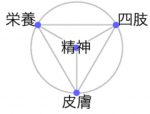
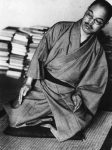
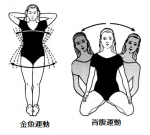


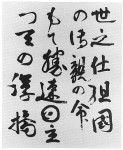
Thanks for sharing.
Your welcome Eckhardt, I’m happy that you enjoyed it!
Best,
Chris